The COPPUS Jectair® HP’s unparalleled performance is widely acknowledged throughout the industry. When compared to older-style air horns, the Jectair® HP’s innovative air mixing chamber may achieve a 40:1 air flow conversion and a 26 percent reduction in compressed air use.
The Jectair is operated on the compressed air or steam principle. Compressed air or steam is fed into the Jectair via a single inlet connection in the housing that leads to the mixing chamber. The air or steam shot from the nozzle produces a “Venturi” effect, which forces a huge volume of ambient air into the Jectair via the aerodynamic inlet bell. After that, the air is expelled at a high rate of speed through the horn-shaped diffuser.
Jectair Features:
- Standard Jectair in five sizes: 3SHP, 3HP, 6HP, 8, or 9
- Heavy-gauge steel diffusers; aluminum diffusers available on 3HP & 6HP model
- Compressed air or steam-operated
- Air flows range from 1,370 to 8,900 cfm (2,328 to 15,121 m3/hr)
- Induction ratios up to 40:1
- Multiple expansion nozzles machined into the housing
- High static pressure capabilities
- No moving parts; virtually maintenance-free
- Static bonding cable with spring tension grip and replaceable contact tips.
- Easily attach duct to outlet diffuser end
- Inlet duct adapter available (optional)
- Tripod for stationary mounting available (optional)
Hornet HP Features:
- Hornet HP models available in three sizes: 3SHP, 3HP, & 6HP
- Features a lightweight, shock-resistant, conductive polymer diffuser that is virtually indestructible
- Polymer safely dissipates static electricity charges
- The diffuser is constructed of linear low-density polyethylene
- UL 94 rating with a maximum operating temperature of 160°F (93°C)
- Compressed air operated only
- Air flows range from 1,370 to 8,900 cfm (2,328 to 15,121 m3/hr)
- Induction ratios up to 40:1
- Multiple expansion nozzles machined into the ing
- High static pressure capabilities
- No moving parts; virtually maintenance-free
- Static bonding cable with spring tension grip and replaceable contact tips.
- Easily attach duct to outlet diffuser end
- Inlet duct adapter available (optional)
- Tripod for stationary mounting available (optional)
Safety Precautions:
- Use bonding cables when operating in hazardous locations to prevent static electricity discharges
- Secure unit before admitting compressed air (or steam) to prevent damage or injury from the high-reaction force
- Do not allow solid objects or debris to enter inlet housing during operation
- When exhausting fumes from an enclosed vessel, take care not to create a vacuum that could collapse the vessel
Accessories:
- Inlet Duct Adapter (3SHP, 3HP, 6HP, 8 & 9)
- Pipeline Adapter (3HP & 6HP)
- Tripod Stands (3SHP, 3HP & 6HP)
- Filter Sock (6HP only)
- (8” Heavy-duty, Conductive or Polyvinyl – 3SHP & 3HP) Duct
- (12” Heavy-duty, Conductive or Polyvinyl – 6HP) Duct
- (16” Heavy-duty, Conductive or Polyvinyl – 8 & 9) Duct
- Duct Canisters (8”, 12” & 16”)
Dimensions:

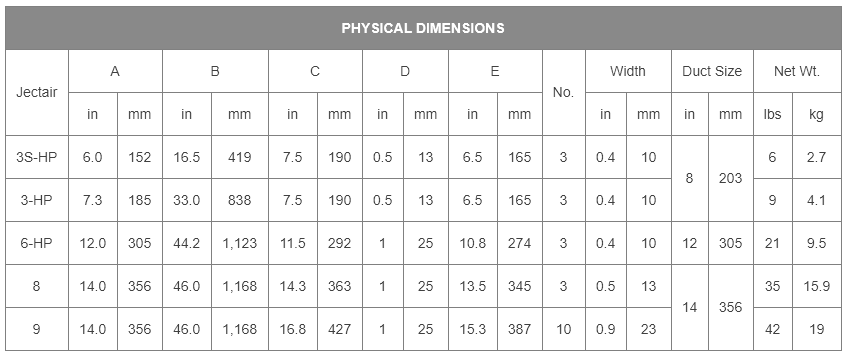
Performance:
Efficiency:
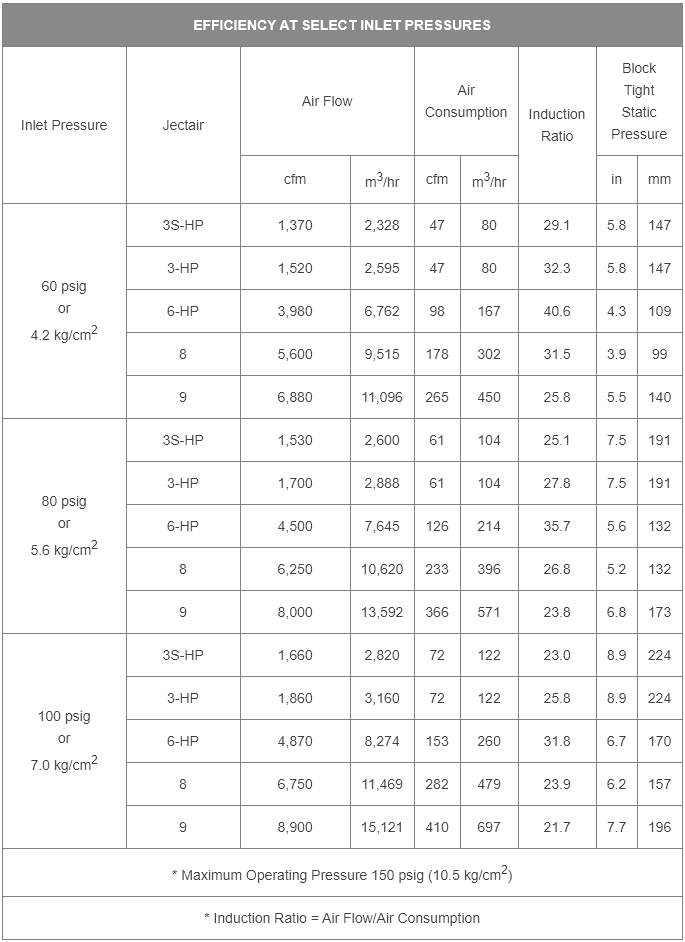


























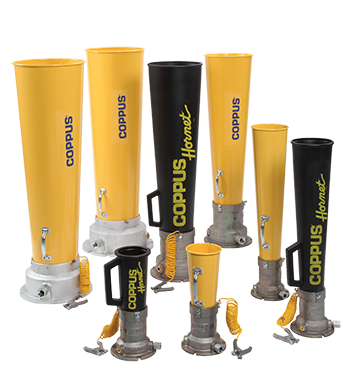
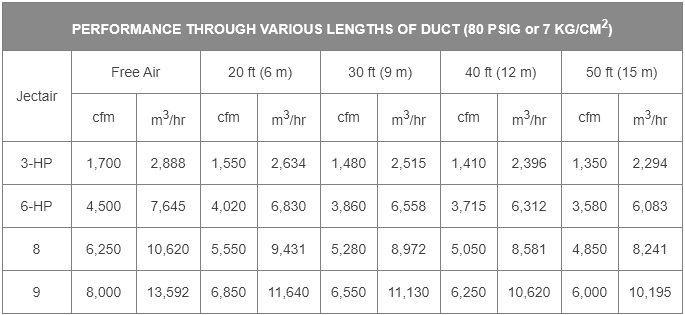

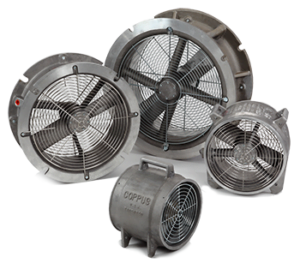


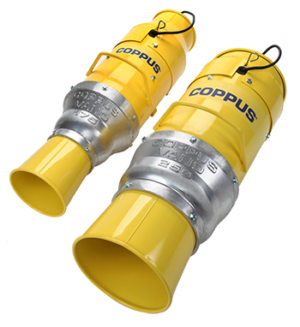
Question
Camilla Hossein –
How does the COPPUS Jectair Ventilator work?
Upvote if this was helpful (0) Downvote if this was not helpful (0) Watch Unwatch Flag for removal
Camilla Hossein –
This device operates on the Venturi principle. Compressed air or steam enters through a nozzle, creating a vacuum that induces surrounding air into the unit. The combined air is then expelled at high speed through the diffuser, providing powerful ventilation with no moving parts.
Upvote if this was helpful (0) Downvote if this was not helpful (0) Flag for removal